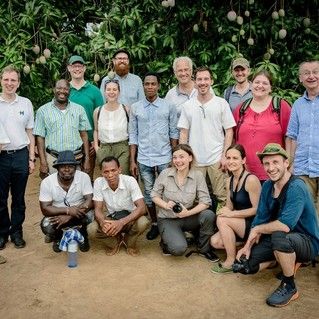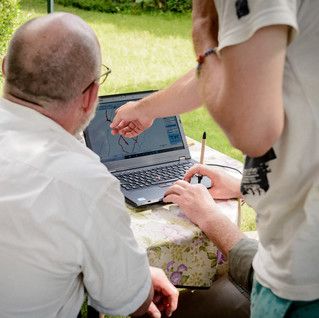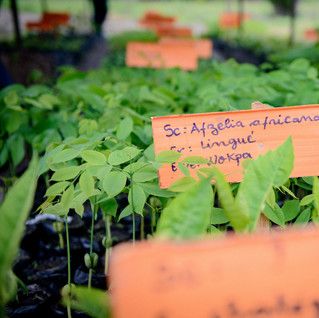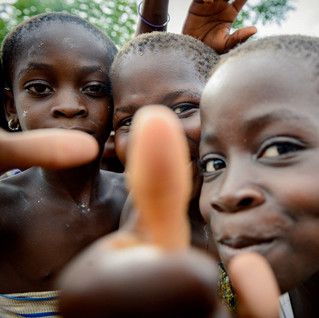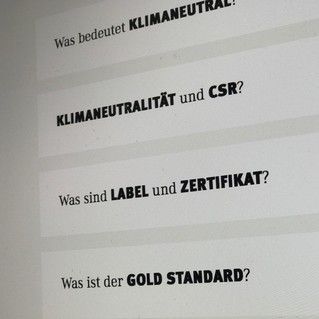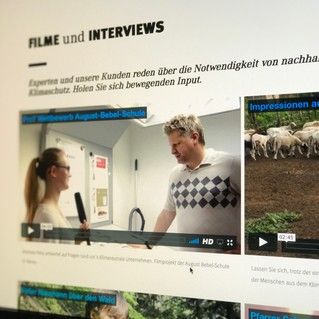FActs, FAcTs, FActs!
"The Internet has educated its users: Today, you do not just want to know that something is happening, you
want to know why and how it happens. Secrets are allowed only in exceptions, transparency rules -
and is long since demanded."
Sascha Lobo
1 500 000+
TREES
planted
4
WELLS
installed
120 +
SHEEP
donated
PROJECT TOGO
Natural forest afforestation
Project history 2010 - today - tomorrow...
After the first certification by the TÜV Süd, the CarbonFix carbon offset standard was sold to the Gold Standard and merged into the Gold Standard.
The transition from CarbonFix to Gold Standard has also been successfully implemented by PROJECT TOGO. The last certification under the Gold Standard took place in 2017/2018 by auditor GFA, Hamburg. The certification report was accepted and approved by the Gold Standard in January 2018.
Certification- and audit reports
Comprehensive certification and test reports ... and all in english...
Get an impression of the scope of a certification. You will find all the reports available for download below.
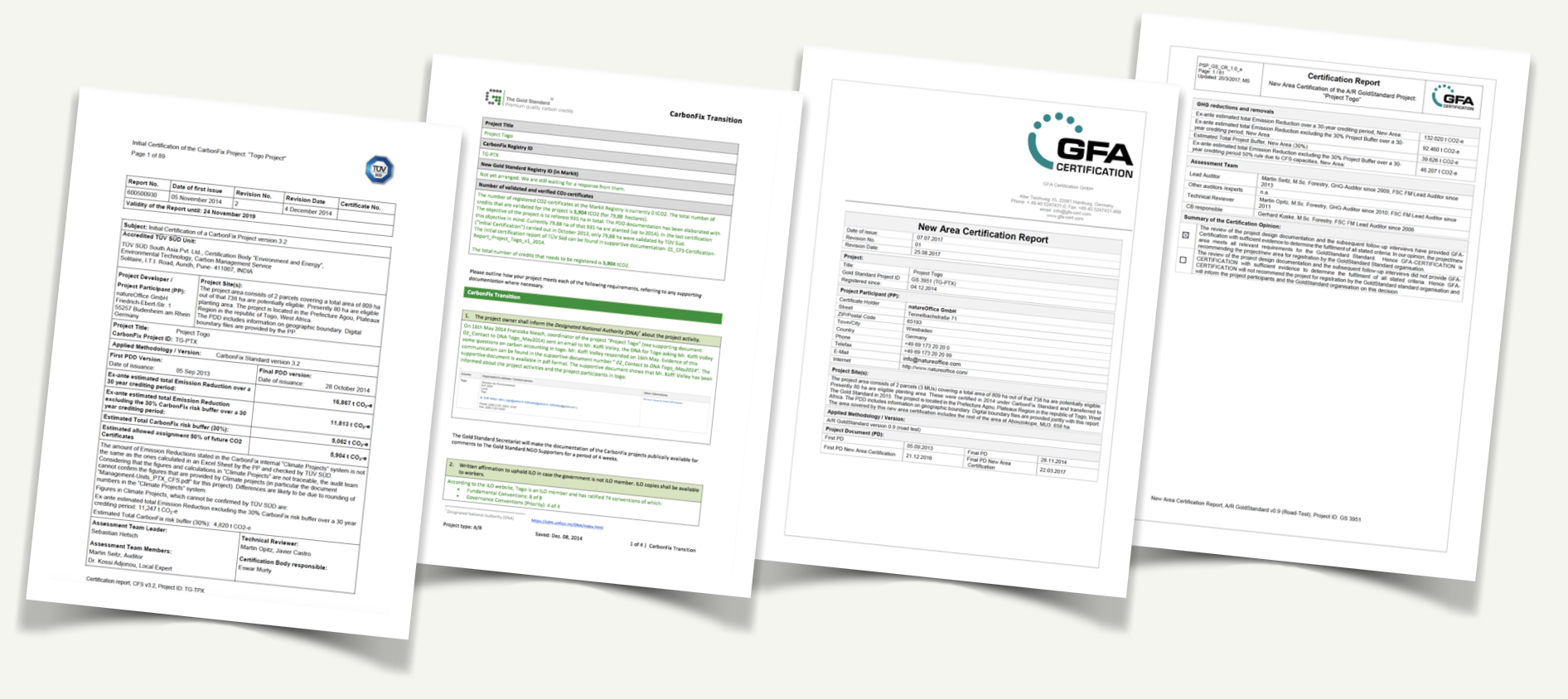
January - March 2019 - FOReST INVENTORY
in cooperation with the College of Forestry in Rottenburg am Neckar
We are looking forward to an independent forest inventory, run by two
Student (Department of Forestry) of the College of Forestry in Rottenburg.
Morena Merkelbach and Tobias Ruhnau will be in the period from January 2019 to
Be in Togo at the beginning of March 2019 to prepare the forest inventory
carry out a follow-up and write a written report.
Since 2012 natureOffice has been running a climate protection project in the area of natural forest afforestation in Togo. The project area is divided into two areas, with a small one area of 85 ha in Fokpo, the larger area of 900 ha in Abouzokope.
GPS coordinates Area Starting point Fokpo: N6 ° 46.257 | E0 ° 52,374
GPS coordinates Area Starting point Abouzokope: N6 ° 40.109 | E0 ° 42.920
Since 2012, up to 15 mostly indigenous tree species have been growing on both
areas planted. The seeds are usually collected in-house or, if appropriate,
purchased from local retailers. The purchase is controlled and monitored by
Namatie Palabe. The seeds are grown in two nurseries, each directly
the surfaces lie, used. The finished seedlings are then, at the beginning
the rainy season in April / May or in September / October introduced into the areas.
Leg planting the seedlings is first a circle of about 3 feet free of vegetation
made. This work is done with the traditional in Togo machete.
The same tool is used to dig a suitably large hole (about 20x20x20 cm) and insert
the seedling. In rare cases, it is poured.
Twice a year, after the two rainy seasons, measures the area around the planted
seedling in turn from damming vegetation ready, so that is enough light to the
seedlings comes. In addition, the created fire curtains (18 km in the total length)
twice a year from the overgrowing elephant grass liberated. This article
The work will be carried out simultaneously by up to 50 employees from the
surrounding villages done. Payment is via the previously with the village
communities negotiated salary. The payment in cash takes place at the end of the week. In forestry work men and women work side by side and on an equal footing.
Task for Morena Merkelbach and Tobias Ruhnau
In the practical period from 07.01.2019 to 07.03 inclusive. 2019 should wife
Merkelbach and Mr Ruhnau first set the limit for the project in Abouzokope.
and planting area, align with the existing documents and
update if necessary.
Furthermore, the area is divided into appropriate management units / departments.
In these an inventory of planted trees / seedlings is carried out.
In addition, the individual departments should be assessed visually. The following
Questions must be answered:
- Location and size of the departments / subdivisions (marking in the area, recording with GPS coordinates, representation in maps).
- When were the areas planted (new planting, reworking, natural regeneration, etc.)?
- Which tree species were planted (native, non-native, etc.)?
- What is the proportion of natural regeneration?
- How big are the trees on average (average tree height, growth performance, etc.)?
- What percentage of the departmental area is wooded (forestation percentage)?
- Did damage occur? What are the causes (fire, biting, insects, ...)?
- Are improvements required (to what extent, which tree species, when, etc.)?
- Are further forest management measures necessary (which, when, to what extent, etc.)?
The basis for recording / verifying the areas are the data from the certification of the project according to the gold standard (project document (PD), certifica-
report, shapefiles, etc.).
At least two employees of the natureOffice team plus two to three forest students of the State Agricultural School in
Kpalimé will be available for support.
The results should be recorded in writing, evaluated and summarized in a report in German. This should serve as a starting point for the planning of further forestry work.
----------------------------------------------------------------------->
We are two students, Morena Merkelbach and Tobias Ruhnau,
School of Forestry in Rottenburg am Neckar. We study both in the 5th
Semester the B. Sc. Forestry. In the current integrated practical semester
there is a possibility to divide the time, therefore we work two months
together at Project Togo.
Because of a strong interest in global contexts, alien flora &
Fauna and, above all, climate protection, we opted for an internship at the
natureOffice GmbH decided in Project Togo. For this period was a
Task tailored to us, which fits both our field of expertise, as well as a necessary basis for further work in the future represents: On inventory of the reforested natural forest in Abouzokopé. We chose an inventory decided in the form of a sampling procedure.
On the forest area of 570 hectares we have various geoinformation
systems (QGIS, Garmin BaseCamp and OsmAnd) 247 GPS points created in
150-meter grid. In the area we then visited these points and recorded a variety of
values within a radius of 10 meters. Including the counting of the different tree
species, the heights of the individual trees or even the Bottom shading degrees.
The work itself has worked closely with the local team took place. So we often have teams of two to accommodate the Data made, since the Togolese colleagues much better with the knowing of the terrain as well as the vegetation.
All in all, the cooperation, on-site support and communication worked very well. We are pleased that we had the opportunity to take this internship and hope that our work will continue to bear fruit in the future.
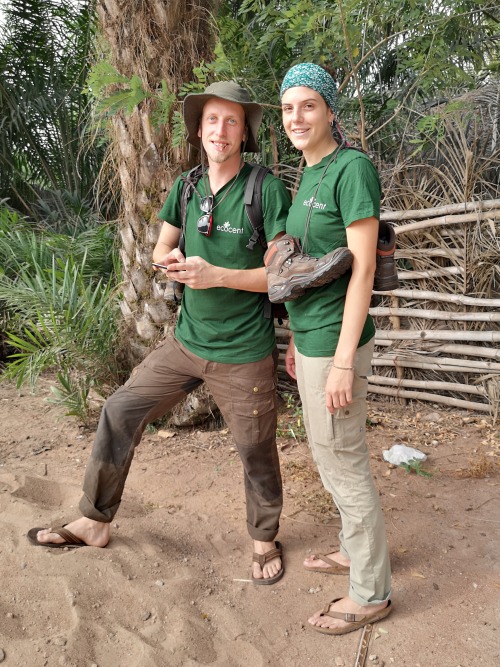
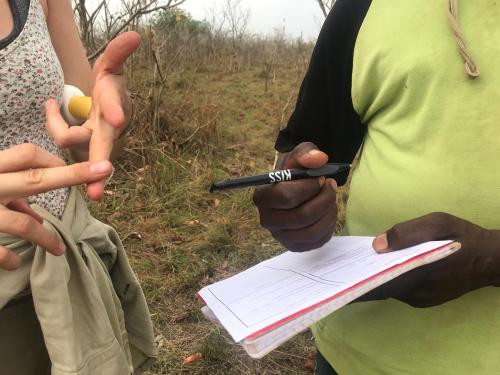
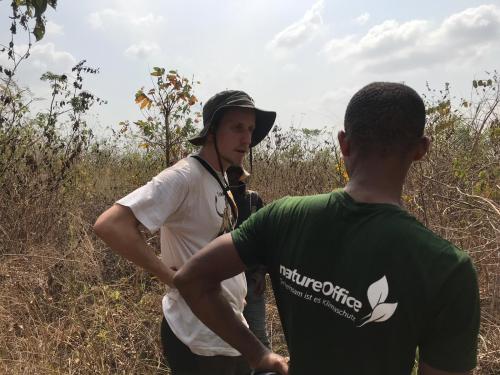
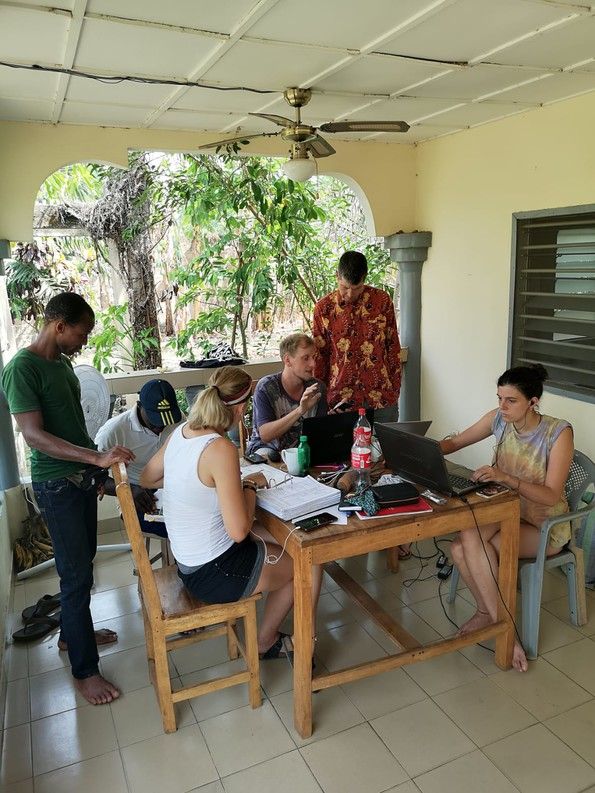
2018/ 2019 - BiodiversitY Study
Biodiversite et dynamique spatio-temporelle de la foret d'Aboudjokope
in cooperation with Institut National De Formation Agricole (INFA) in Kpalimé and University of Lomé
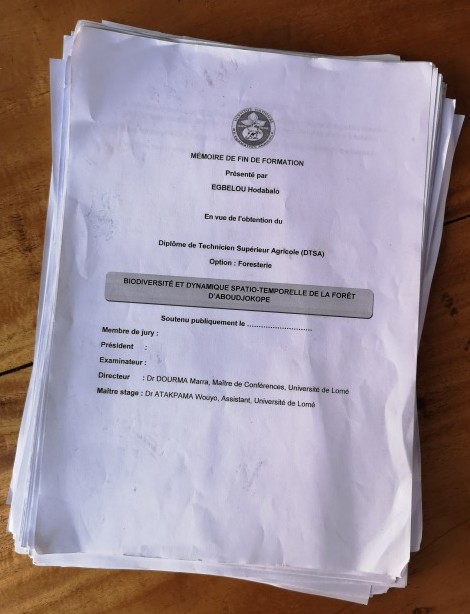
A biodiversity study commissioned by natureOffice named
BIODIVERSITÉ ET DYNAMIQUE SPATIO-TEMPORELLE DE LA FORÊT D'ABOUDJOKOPE
was carried out by the National De Formation Agricole Institute (INFA) in Kpalimé in collaboration with the University of Lomé and presented the first version.
The study is concerned with reproducing a snapshot of the natural forest area within PROJECT TOGO and showing and describing the changes compared to an unprocessed area, as well as a change process from 2012 to 2018.
A first interim report, submitted on 1 February, confirms the massive reduction of previously existing savannas in favor of forest land.
A total of 276 types of vegetation (trees, shrubs, flowers and moss plants) were counted on the area. The biodiversity is concentrated in the inner core of the area.
In the outer edge of the area, however, 208 vegetation types were still registered, which points to a significant expansion of diversity beyond the area borders. This means that the natural forest area of PROJECT TOGO works on the biodiversity far beyond the actual area.
After the study was presented at the institute, we will report in detail on the results and publish the document.
Our carbon offset project meets
12 of 17 Global Goals of UN AGENDA 2030
"Afforestation projects are the key to promoting 12 of the 17 sustainability goals
of the world community in the framework of the 2030 Agenda in Africa. "
For natureOffice, as a project developer, it is important that the project continues to evolve. In addition to the natural forest, the development of social structure in the region is a very important factor. The aim is to promote self-sustaining value chains for sustainable development with local people.
FAcTs about the project | |
|---|---|
REGISTRY NO | GS 3951 |
PROJEKT TYPE | Reforestation of fallow land to natural forest |
PROJECT START | June 2010 |
PROJECT DURATION | 30 years |
TRANSPARENcy | ongoing project evaluation and documentation online and on demand |
PROJECT STANDARD | up to July 2018 Gold Standard as Verified Emission Reduction (VER) from August additional areas based on the Gold Standard and CCBS in preparation |
PROJECT STATUS | certified, Report No. 600500930 / TG-PTX (2014 TÜV Süd, 20180 GFA Hamburg) |
Global Goals (SDGs) | 1 - 2 - 3 - 4 - 5 - 6 - 7 - 8 - 12 - 13 - 15 - 16 |
CO-BENEFITS | Integrated location consolidation with economic empowerment, education and training, health-, energy- and water infrastructure |
PROJEcT AREA | 1.000 ha +from 2018 further areas in preparation |
total co2-savings | 396.000 tons CO2during the duration of 30 years |

These are our activities in the Natural forest afforestation
In the case of natural forest afforestation in Africa, especially on degraded soils or brownfields, we distinguish
between recurring and one-time activities.
One-Time activities on afforestation area
- Surface measurements via GPS
- Evaluation of satellite images
- Verification of missing trees over the past 50 years
- Landmark setting at the edges of the area
- Planning and creating the fire brakes
- Planning of the nursery locations
- Planning the water supply of nurseries
- Determination of tree species to be planted on the area
- Search for tree rowing models / literature search
- Quality determination for seedlings
- Germ tests
- Establishing processes for germ tests
Currently there are no Gold Standard certificates available from PROJECT TOGO. However, in order to continue your involvement in PROJECT TOGO, we have expanded our range of combined projects to include TOGO plus. Depending on the selected carbon offset project for CO2-offsetting in the VCS or Gold Standard.
In the future, you will also be able to engage in forest afforestation, operated and implemented in accordance with the regulations of the Gold Standard.
As in the Gold Standard, the new areas will also be regularly audited by approved and experienced auditors.
recurring activities on afforestation area
- Cleaning the fire breaks (twice a year, after the rainy season)
- Keep the routes free
- Operation of nurseries
- Procurement of tree seeds (collecting and buying)
- Filling the plant bag (polybags - biodegradable in the future!)
- Production of organic fertilizer
- Preparing the plant beds for direct sowing
- Care of seedlings in nurseries
- Surface preparation for the planting of the young trees
- Transport of seedlings to the planting sites
- Planting of seedlings and regular control (at the beginning of the rainy season)
- GPS surveying the planting sites
- Keepiing tap on the area book
- Cleaning the planting sites after the rainy season (weed, grass removal)
- Control of plants for diseases and pests
- Fire station on the plane
- Sensitization workshops in the adjacent project villages regarding fire prevention
- general area control (fences, paths, firebreak)

